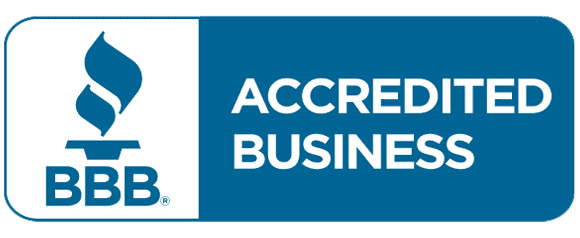Every country has a different taxation system for individuals as well as for the different types of business entities allowed in that country. The tax systems can be pretty simplistic with a fixed tax for everything, or they can be very complicated with different levels of taxation, depending on the salaries the business has to pay and profits that the business earns. For the exact and specific tax laws in your particular country, if you are outside of the United States, please talk to a local accountant and do your research. This section, just like the previous sections four and six, are illustrating the United States laws, accounting and taxation systems. Even though you may be from another country, and this may not be pertinent to you directly, this information can be very educational, and can help you to better navigate your local tax laws and requirements.
In general, corporate taxes are more complicated than taxes for a pass-through entity for a number of reasons, including the fact that a corporation exists as a separate legal entity from its owners. Additionally, not all corporations are treated the same. An S Corp can be the same as C corporations in many aspects, but not when it comes to taxes. A C corporation must pay taxes itself, while an S Corp is a pass-through entity for tax purposes and doesn’t pay income taxes separately from the owners.
As a separate tax entity, a C corporation must file and pay income taxes on its own tax returns much like an individual does. After paying employee compensations, fringe benefits, operational expenses and all other reasonable and necessary business expenses have been subtracted from the businesses earnings, a corporation pays tax on whatever profit remains.
In small corporations where all of the owners of the business are also the business employees, all of the corporations’ profits can be paid out in tax deductible salaries and fringe benefits, therefore leaving no corporate profits, meaning that no corporate taxes are due. There may be no corporate taxes due however, the owner/ employee still must pay income tax on their salaries and benefits and report this on their individual tax returns.
The tax cuts and Jobs Act of 2017 made a major change and simplification to corporate taxes replacing eight tiers of rates ranging from 15% to 39% to just one fixed tax percentage for all corporations: 21%. This is a significantly lower tax rate in comparison to some individual income tax rates, plus the simpler tax structure, may make C corporations more attractive to even very small businesses.
Let’s look at an example. If you are an independent business owner or small business owner with a few employees and your business is registered as a C corporation, you will pay the following taxes:
- Income tax on the salary you pay yourself (roughly 15 to 35%)
- Corporate tax on whatever profit the business retains (21%)
In most cases, independent or small business owners take ALL of the profit as their own. So, having a C corporation makes things more complicated and potentially more expensive. For instance, if you paid yourself a salary of $50,00 but your business had a total profit of $100,000, you could choose to leave the other $50,000 “in the business” (which really just means in the business account) at the end of the year. If you do this, the business has to pay 21% tax on it. But, if the following year you decide to pay yourself that extra $50,000 sitting there, you then have to pay your income tax on it, which means you paid taxes on it twice.
Alternatively, instead of leaving the money “in the business” you could choose to take the $50,000 as additional income through other methods, like dividends (discuss more below). But, this can also be double taxed, as you’ll see, and it’s a lot more complicated.
If you were considering incorporating and you want to avoid the complication and double taxation and would like to be able to take ALL of your company’s profit as your own income, file it as an S corporation which will make all profit your income automatically. (This is how LLCs and sole proprietorships work.)
Let’s talk about double taxation. This type of taxation is applied to larger corporations with shareholders who are not active employees in that corporation, and who receive dividends from the business, not salaries or bonuses or both. These dividends paid to shareholders cannot be deducted as business expenses from corporate earnings, therefore the dividend amounts are included in the total corporate profits and taxed. Then when a shareholder receives the dividend, the dividends are taxed at the shareholder’s individual tax rate, as part of his personal income. So, you can see that any money paid out as dividends gets taxed twice: once at the corporate level and once at the individual level.
So, how can you avoid this double taxation? Simple. Don’t pay dividends. This isn’t always an option for large companies with many shareholders. If you can, opt for an S Corp instead. If you want to have your entity formed as a corporation but you want to avoid the many complications that come with running a C corporation, you can look into an S Corp. Remember, S corporations are pass through entities, and they do not pay taxes as a separate entity. With an S Corp, any profits will pass through to the owners who pay taxes on their income, just as if the business was a sole proprietorship, a partnership or an LLC.
Author: Sanda Kruger
Sanda is an entrepreneur, real estate investor, health coach and professional dancer. Sanda is an entrepreneur with more than 20-year experience in business development and project management in the fields of life, health and fitness coaching. She is also a real estate investor and a banker, who learned outstanding adapted business strategies, sales and marketing techniques, communication, and goal setting skills, hands-on, through life and work experiences. She is a certified fitness professional and is the creator of two original fitness programs, called BellyCore® Fitness and AquaCor®.
If you want to dive deeper into the EVERYTHING you need to know about starting a life coaching business, check out the following 3 self-paced online courses!

STARTUP 101
Take this free article series you are reading now further and learn more about taxes, accounting, creating a business plan, startup costs, funding, and more!
Save 50% with coupon code: STARTUPBLOG

BUSINESS FUNDAMENTALS
LIFE COACH CERTIFICATION
Want to guide other entrepreneurs through this startup process? Get CERTIFIED and trained to use all of the content in the Startup 101 course above PLUS a ton more content on goal setting, business mindset, marketing and advertising, too!
Save 50% with coupon code: STARTUPBLOG

LIFE COACHING
BUSINESS MASTERCLASS
Get your COACHING OFFER ready to launch! This course will guide you through choosing a niche, creating a signature coaching package, and the marketing strategies that have been proven to be most effective for life coaches
(joint ventures, free sessions, and speaking).
(Learn more first with this free video series)
Save 50% with coupon code: STARTUPBLOG







